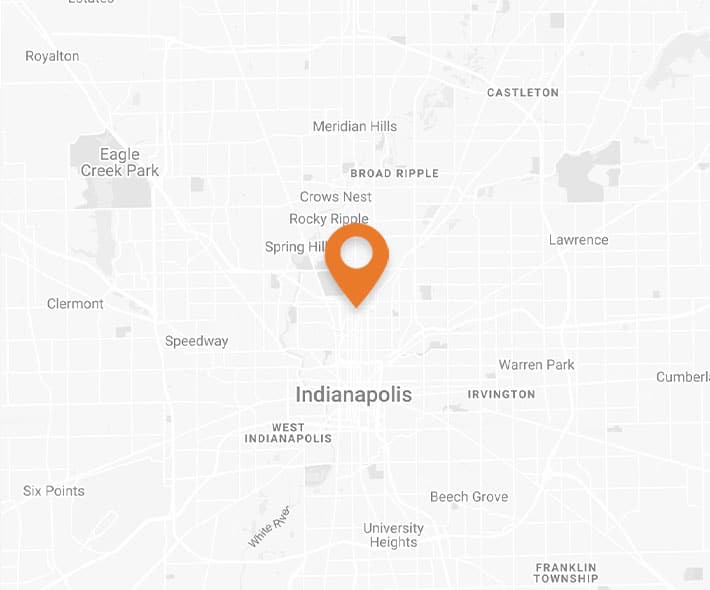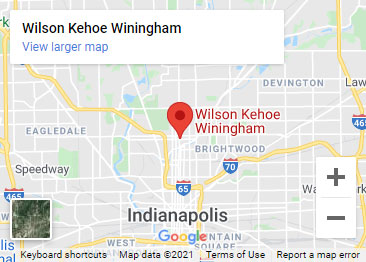Breast Cancer Awareness: What You Need to Know
Updated November 18, 2024 | By Wilson Kehoe Winingham staff
Do you have breast cancer, or is someone you love struggling with breast cancer? Get familiar with facts and common myths about breast cancer to help support your loved ones and understand the disease.
Breast Cancer Facts
Learn more about breast cancer via the following facts, according to Susan G. Komen for the Cure of Central Indiana:
- 2,149 new cases of breast cancer in men will be reported this year, which is a rate of 1.3 new cases per 100,000 men compared to 123.4 new cases per 100,000 women
- The breast cancer mortality rate among African American women is 39% higher than among white women. Factors include barriers to healthcare access and a later stage of breast cancer at diagnosis
- As estimated by the American Cancer Society, 39,970 women will die from breast cancer this year in the United States
- 90–95 percent of women diagnosed with breast cancer don’t have a family history of the disease or of cancer in general
- 4,350 Indiana women were newly diagnosed with breast cancer in 2010
The most startling of all the statistics: one out of every eight women will get breast cancer, a woman dies of breast cancer every 13 minutes, and the disease is the leading cause of death for women ages 15 to 54.
Breast Cancer Claims (and Realities)
Dr. Otis Brawley, the American Medical Society’s chief medical officer, addressed some claims about breast cancer.
Claim: All Lumps in the Breast Are Cancerous
This claim is not true. In fact, Brawley said that “most lumps are not cancerous, especially in younger women, but every lump should be evaluated.”
Claim: Breast Cancer Is an Automatic Death Sentence
Breast cancer death rates have steadily declined in women wince 1990. “We have about 220,000 to 240,000 women who are diagnosed with breast cancer in the average year, and there are about 40,000 who die in the average year,” Brawley said. “A woman’s risk of dying from breast cancer today is 70 percent of what that woman’s risk would have been at the same age 20 years ago.”
Claim: Leading a Healthy Lifestyle Can Prevent Breast Cancer
Unfortunately, this is not exactly true. “A healthy lifestyle can reduce the risk of breast cancer,” Brawley said. But it’s not a 100 percent guarantee that you won’t get it.
“Take the 55-year-old woman who gets breast cancer and says, ‘I did everything they told me to do. I got a mammogram every year to try to detect it early, but now I’m diagnosed with Stage 4 disease. I exercised. I ate right. I didn’t smoke. Why did this happen to me?'” Brawley said. “The answer is all of those things reduce risk of getting cancer but do not reduce risk to zero.”
On a similar note, “obesity increases risk of breast cancer,” but “every obese woman is not going to get breast cancer,” he said.
Claim: Thermography Is Better Than Mammography for Breast-Cancer Screening
“No, it is not,” Brawley said. “We do need a better test (than mammography). I wish thermography were that better test, but I don’t have clinical studies to tell me that thermography is that better test right now.”
Thermography is a way to measure and map heat on the surface of the breast to detect changes that could possibly indicate a tumor. The American Cancer Society doesn’t endorse its use for screening.
Also, the Food and Drug Administration (FDA) issued a warning in June that thermography is not a substitute for mammography. The statement noted that “the FDA is unaware of any valid scientific evidence showing that thermography, when used alone, is effective in screening for breast cancer.”
Claim: There Is No Need to Get a Mammogram at Age 40
There is some debate when it comes to this claim. But the American Cancer Society recommends an annual mammogram, starting at age 40. “The number of lives that mammography saves among women in their forties is a small number, but it saves lives,” Brawley said.
In late 2009, another group—the United States Preventive Services Task Force—sparked controversy by recommending that women start screening at age 50. The expert panel, which suggested that mammograms be done every two years, said the benefit of screening in the 40 to 49 age group is small and cited other drawbacks, such as common false alarms. But the task force also stated that the decision to start screening before age 50 should be an individual one.
Brawley acknowledged there are problems with the test, including the fact that it “will miss a lot of breast cancer, but it still saves lives,” he said. “Therefore, we recommend it.”
Claim: You Must Conduct Formal Breast Self-Exams
Actually, the American Cancer Society’s official screening guidelines refer to breast self-exams as just “an option” for women who’ve reached their twenties, and the Preventive Services Task Force recommended against teaching the exams. Brawley suggests this approach: “What a woman should do is be aware of her breasts and think of it as a brief physical exam every day when one is in the shower as opposed to that monthly breast self-exam that took a half hour to do. If one finds an abnormality, one should seek medical attention for that abnormality.”
Contact a Personal Injury Attorney Today
If you or a loved one have been injured as a result of someone else’s negligence, you are urged to contact an Indiana personal injury lawyer of Wilson Kehoe Winingham. The lawyers at WKW can help you get the compensation you deserve. Call 317.920.6400 or fill out an online contact form for a free, no-obligation case evaluation.
Contact Us
Let WKW put our experience to work for you. Contact us for your free case evaluation.
Or, call us today at (317) 920-6400


